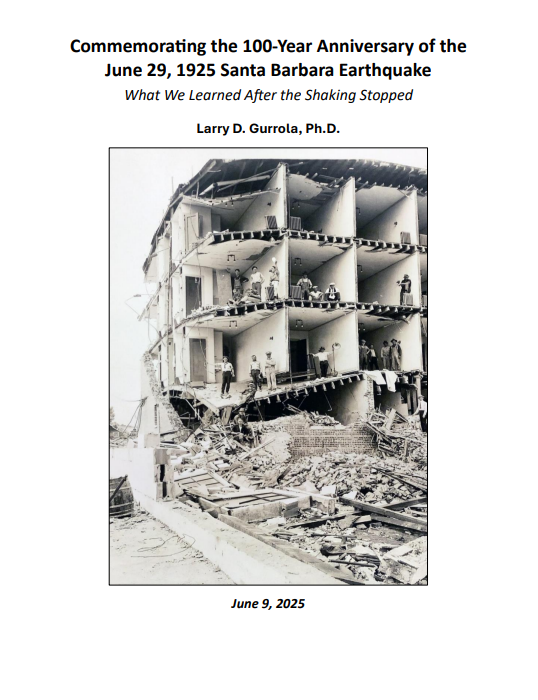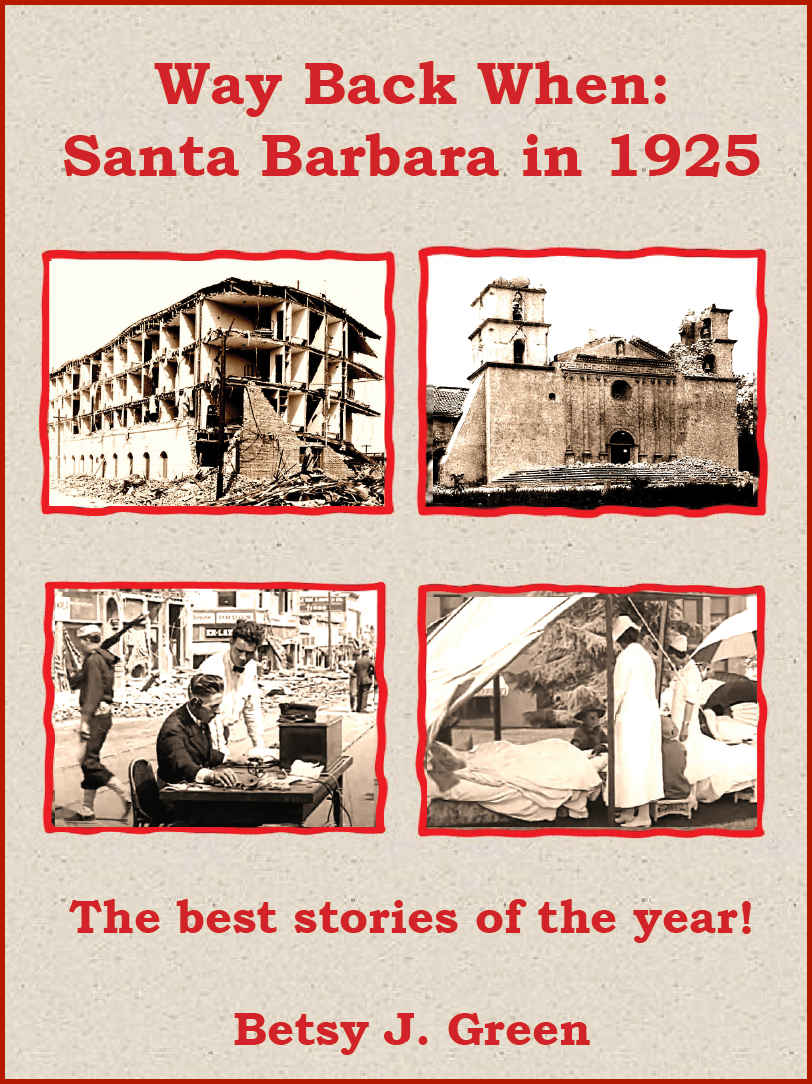Resources
Commemorating the 100-Year Anniversary of the
June 29, 1925 Santa Barbara Earthquake
What We Learned After the Shaking Stopped
Larry D. Gurrola, Ph.D.
Betsy J. Green specializes in writing about local history, architecture, and the environment. Books by Betsy, including Way Back When Series, can be found at https://www.betsyjgreen.com
Videos
History of the SB Courthouse and how the 1925 Earthquake transformed it.
City of Santa Barbara Poet Laureate’s Poem
June Ruins Rise
Julia Morgan was knocked down to her knees.
Not by the men who couldn’t fathom
a woman could out-architect them,
but by the Earth, its tectonic crust
ripping past itself, sending a forceful roll
right up State Street, so fluid someone
could practically surf it from the harbor
to the soon-to-be ruins Arlington Hotel.
A never-ending, it seemed, nineteen seconds,
the ground itself screaming, a noise
one witness said sounded like
“a million dogs crunching bones.”
The shock scattered the blueprints
tucked under Julia’s arm: a hotel
for professional women designed for her client
Pearl Chase waiting for her uptown. Crawling,
at first, Morgan knew enough to keep away from
brick storefronts sure to shear off, a horror
she had witnessed in San Francisco, 1906.
Her scientific instinct never failed her,
so she mentally took notes of what stood,
what collapsed, averring the strength
of the reinforced concrete she championed,
material recently used for the unharmed Granada.
Not that Morgan ever forgot the people
in her buildings, but she didn’t brook sentiment,
realizing each catastrophe’s clearing
allowed for a step toward the future.
Architecture, that science where
the prayer part doesn’t get said aloud.
Why just lament the dead if you could
honor them with structures that made
of their loss a lesson? And yes, beauty.
That is to say: unlike Frisco, Santa Barbara
didn’t burn, but still soared from its ashes.
Morgan rose to her feet, shook off
as much dust as she could,
kept her appointment amidst aftershocks.
That hotel for professional women
would welcome occupants in a year.
Just one of the many structures—
white stucco walls gilt in California sun,
red tile roofs resplendent, and soon
Moorish flourishes, hidden courtyards,
a nod to the past that
hadn’t quite ever existed, but who wouldn’t
have wanted to live there.
In this way Santa Barabra built a future,
standing, standing to this day.
George Yatchisin
EQ25.org - 100 Year Santa Barbara Earthquake Commemoration
copyright 2025 | EQ25org@gmail.com





